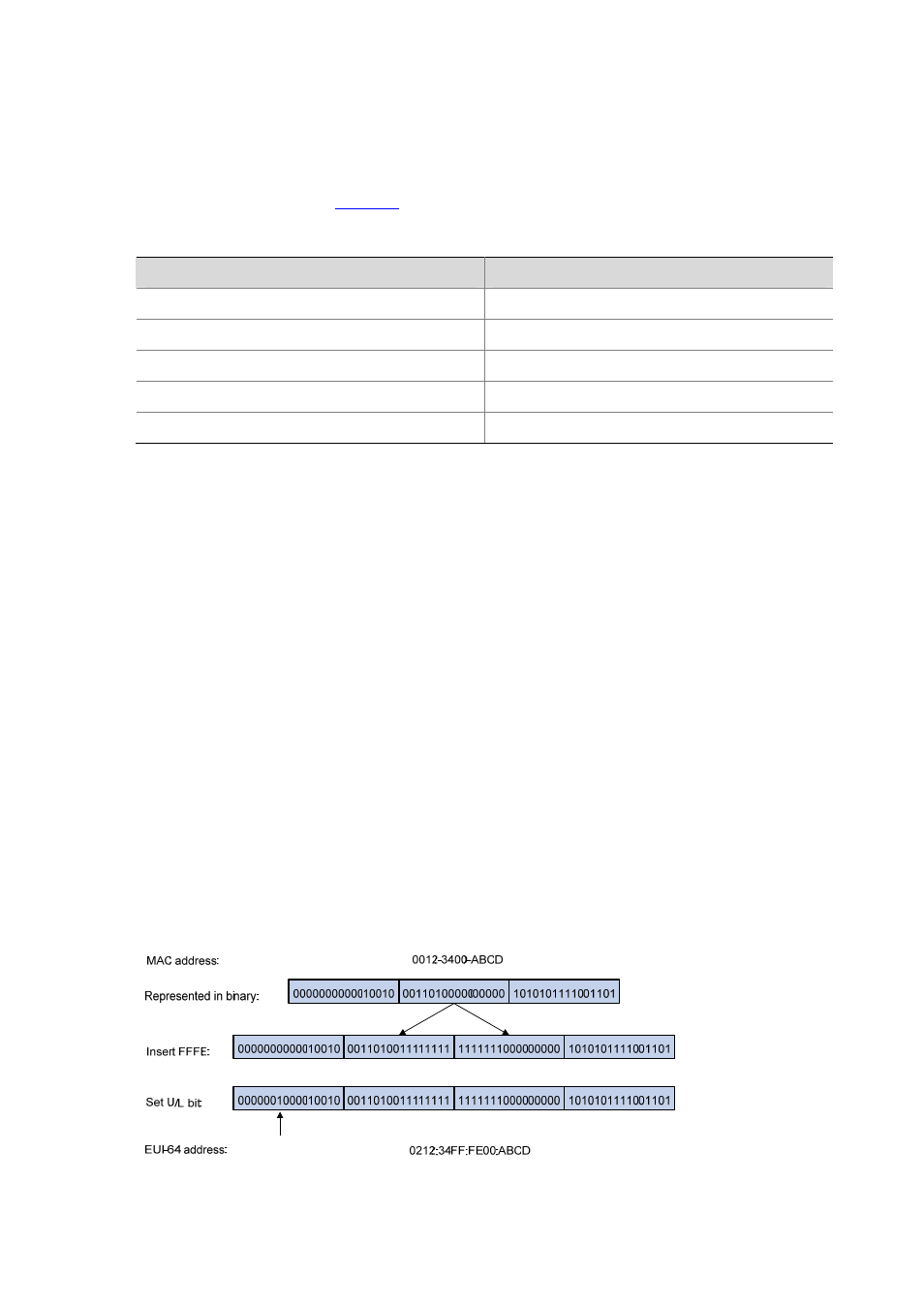Multicast address, Interface identifier in ieee eui-64 format – H3C Technologies H3C S3600 Series Switches User Manual
Page 1095

1-5
z
Unassigned address: The unicast address :: is called the unassigned address and may not be
assigned to any node. Before acquiring a valid IPv6 address, a node may fill this address in the
source address field of an IPv6 packet, but may not use it as a destination IPv6 address.
Multicast address
Multicast addresses listed in
are reserved for special purpose.
Table 1-2 Reserved IPv6 multicast addresses
Address
Application
FF01::1
Node-local scope all-nodes multicast address
FF02::1
Link-local scope all-nodes multicast address
FF01::2
Node-local scope all-routers multicast address
FF02::2
Link-local scope all-routers multicast address
FF05::2
Site-local scope all-routers multicast address
Besides, there is another type of multicast address: solicited-node address. The solicited-node
multicast address is used to acquire the link-layer addresses of neighbor nodes on the same link and is
also used for duplicate address detection. Each IPv6 unicast or anycast address has one
corresponding solicited-node address. The format of a solicited-node multicast address is as follows:
FF02:0:0:0:0:1:FFXX:XXXX
Where, FF02:0:0:0:0:1:FF is permanent and consists of 104 bits, and XX:XXXX is the last 24 bits of an
IPv6 address.
Interface identifier in IEEE EUI-64 format
Interface identifiers in IPv6 unicast addresses are used to identify interfaces on a link and they are
required to be unique on that link. Interface identifiers in IPv6 unicast addresses are currently required
to be 64 bits long. An interface identifier is derived from the link-layer address of that interface. Interface
identifiers in IPv6 addresses are 64 bits long, while MAC addresses are 48 bits long. Therefore, the
hexadecimal number FFFE needs to be inserted in the middle of MAC addresses (behind the 24
high-order bits).To ensure the interface identifier obtained from a MAC address is unique, it is
necessary to set the universal/local (U/L) bit (the seventh high-order bit) to “1”. Thus, an interface
identifier in EUI-64 format is obtained.
Figure 1-2 Convert a MAC address into an EUI-64 address
